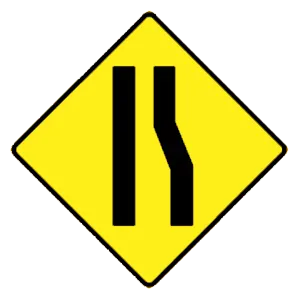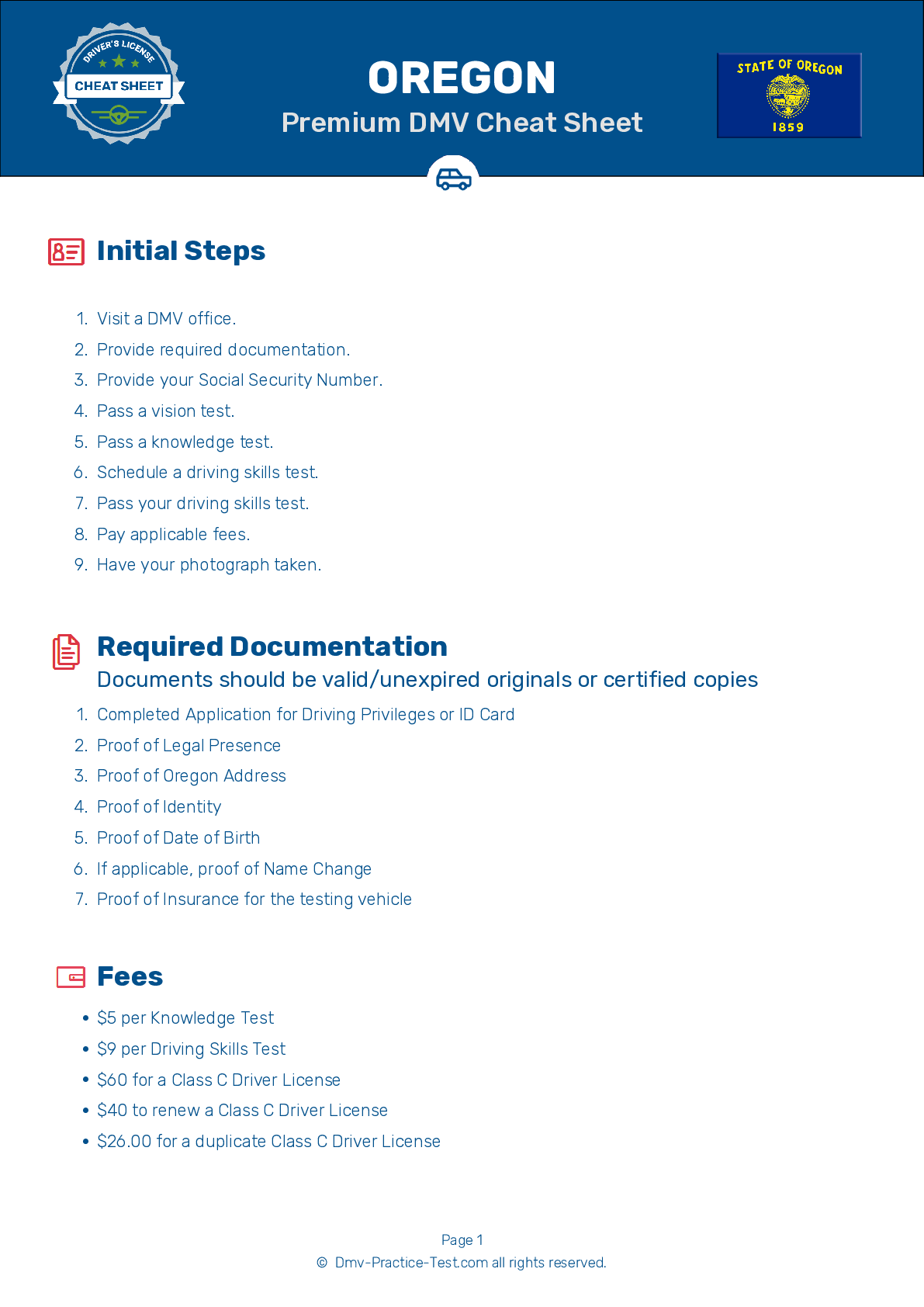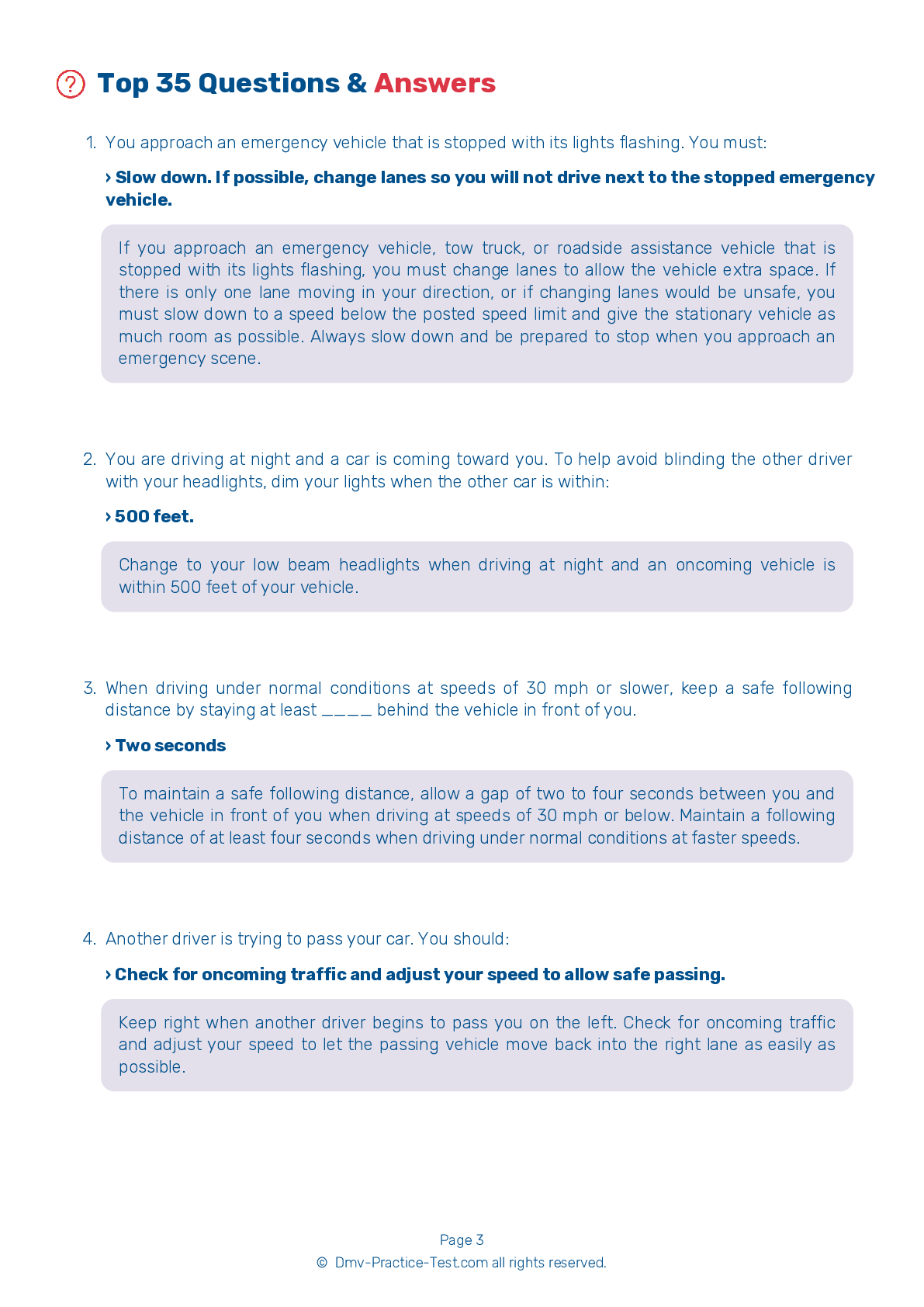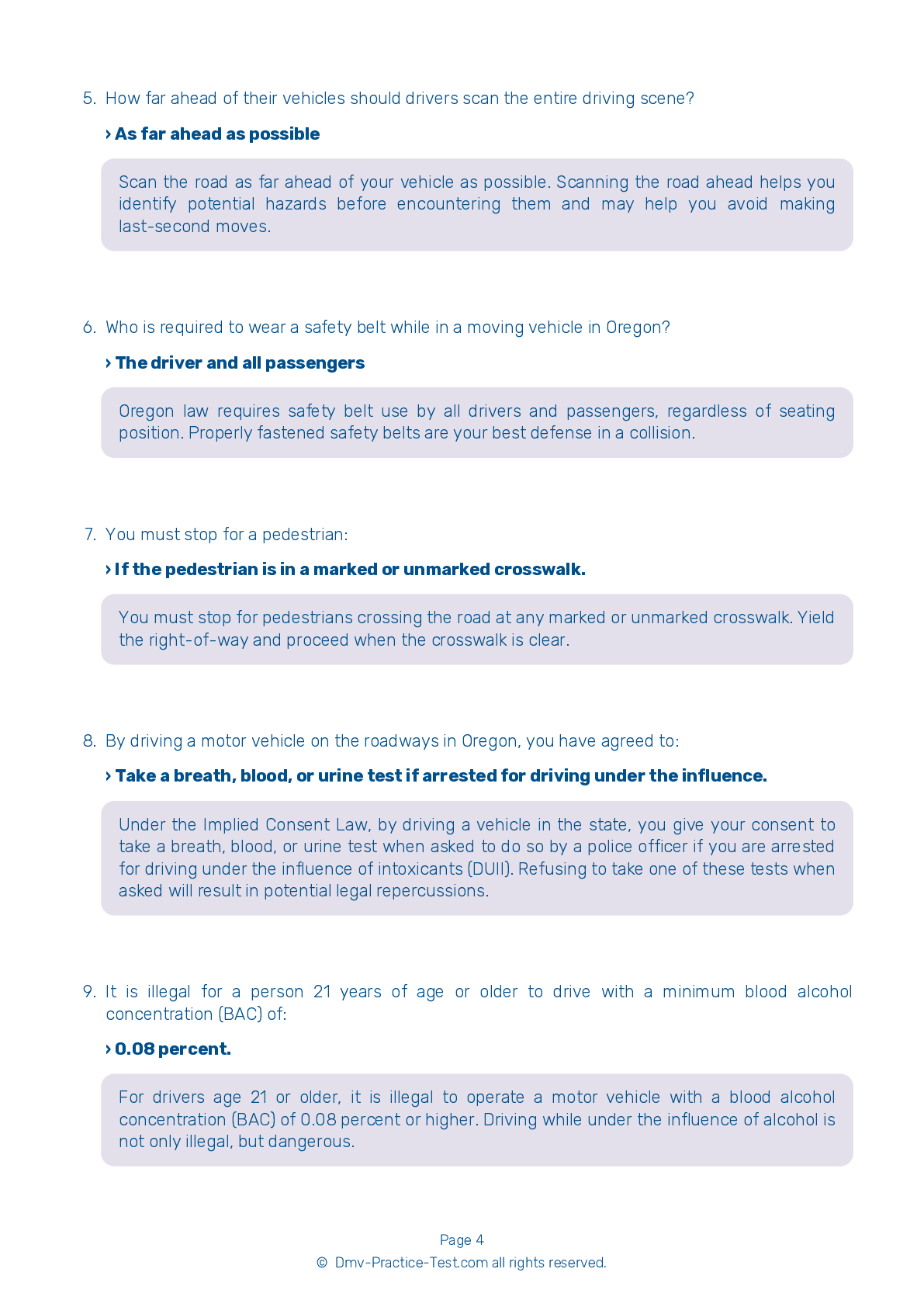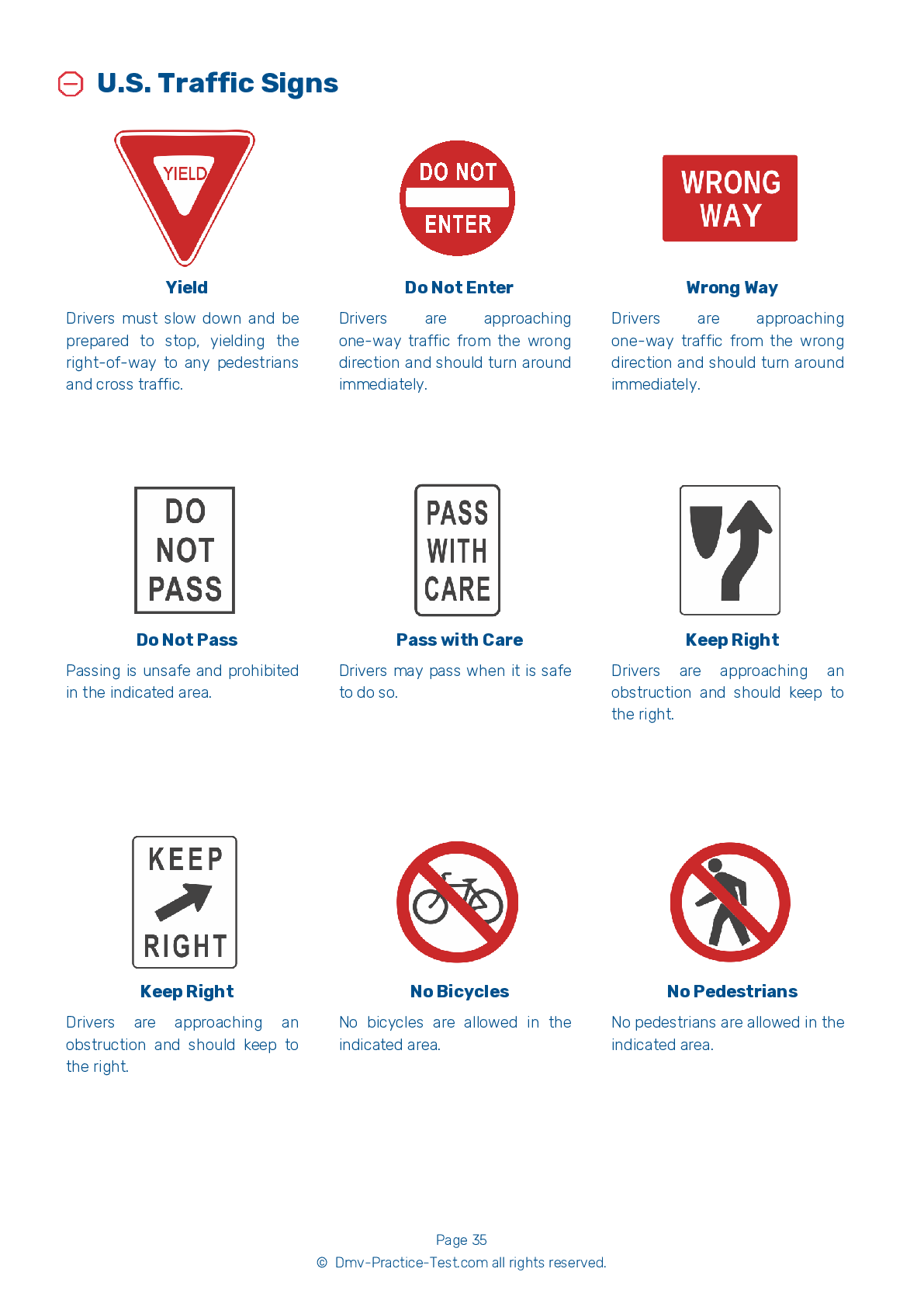FREE Oregon DMV Practice Test #14 Page 5 of 5
The practise exams for the Oregon DMV have been updated for January 2025. It includes questions based on the most important traffic signals and regulations for 2025 from the Oregon Driver Handbook. To study for the DMV driving permit test and driver's licence exam, use actual questions that are very similar (often identical!) to the DMV driving permit test and driver's licence exam.
Each question on the practise exam has a tip and explanation to help you recall the ideas. Questions about traffic rules, traffic signs, and driving statutes, as well as knowledge from the Driver Handbook, will be included in the written portion of the official Oregon DMV test.
You must properly answer 28 of the 35 questions to receive a passing mark. Use the Oregon Department of Motor Vehicles' practise exam to help you prepare for your instruction permit or driver's licence.
The DMV exam is offered in a variety of languages.
Using any form of testing help will result in an automatic fail, and the DMV may take further action against your driver's licence, so avoid it.
29 . While driving, your wheels slip off the edge of the road. You should:
If your vehicle begins to leave the road, continue to drive with the wheels off the pavement and reduce your speed by gently applying the brakes. When at a safe speed, turn the steering wheel to return to the pavement. Do not attempt to force your vehicle back onto the pavement by sharply turning the steering wheel.
30 . This road sign means:
